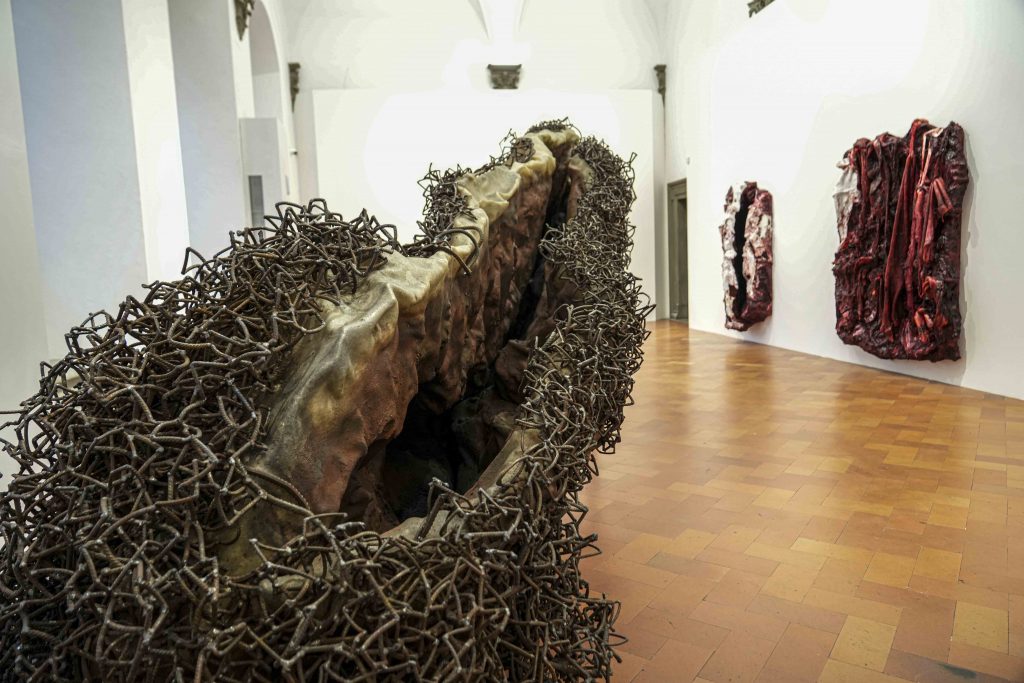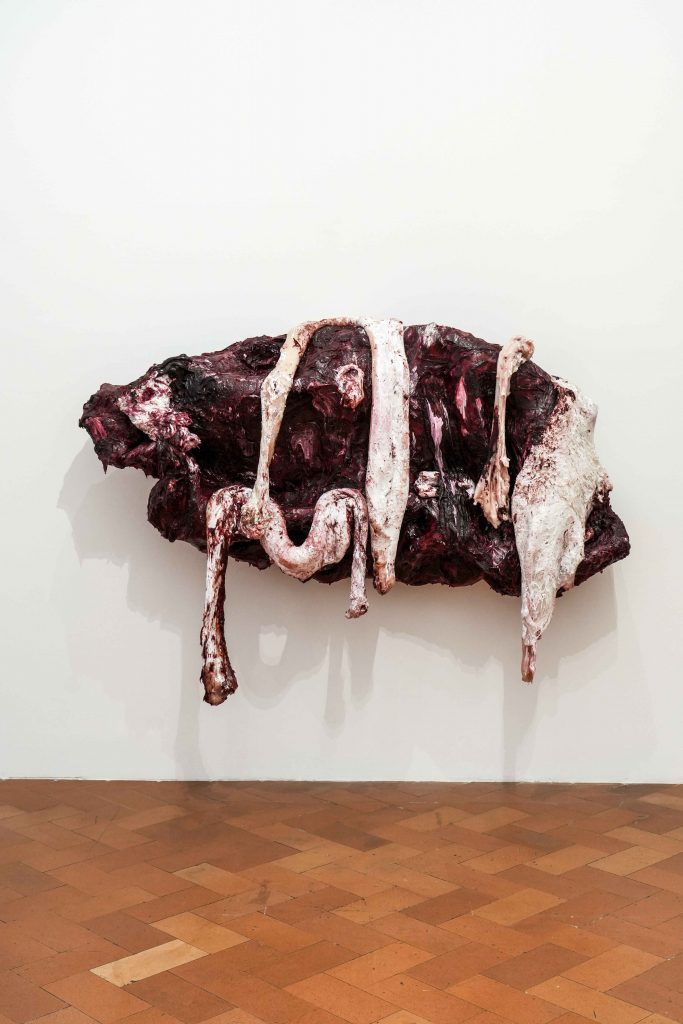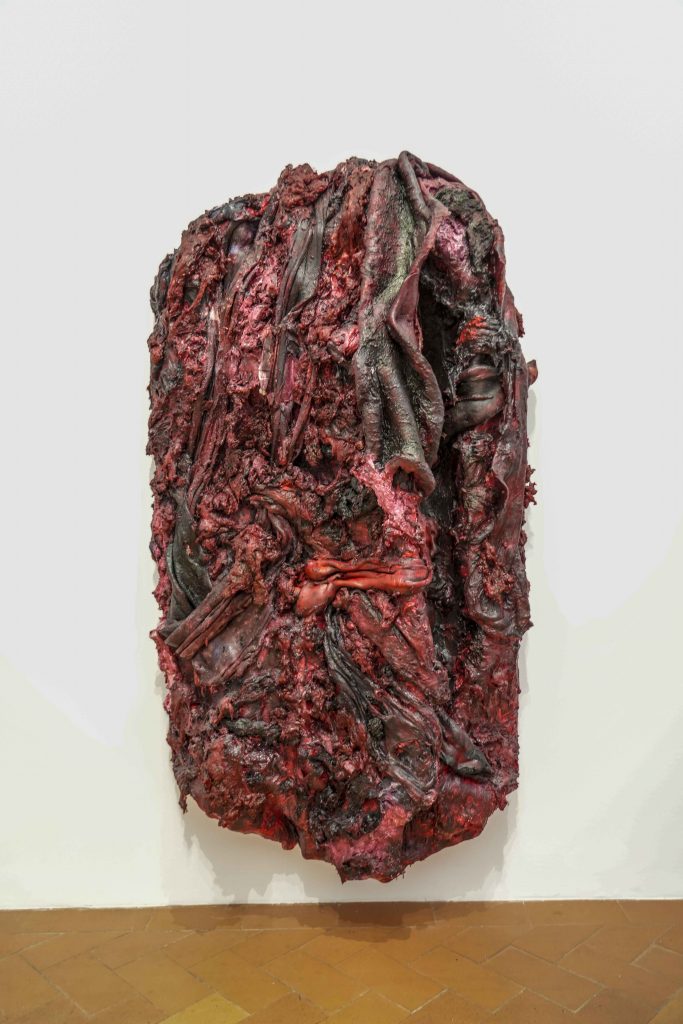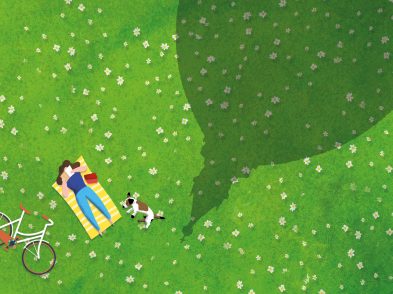Opening Saturday at Palazzo Strozzi, Anish Kapoor’s exhibition is set to spark visceral and intellectual reactions among an engaged audience. Untrue Unreal is retrospective and prospective as the premier artist’s past works interact with both the symmetry of the Renaissance halls and visitors to the much-hyped show.
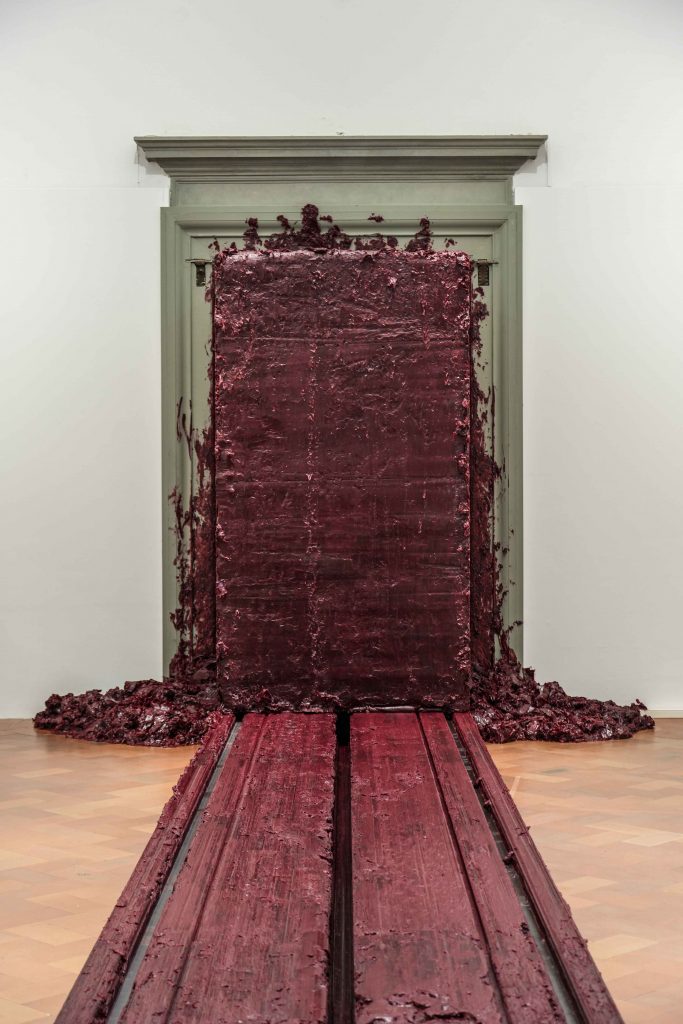
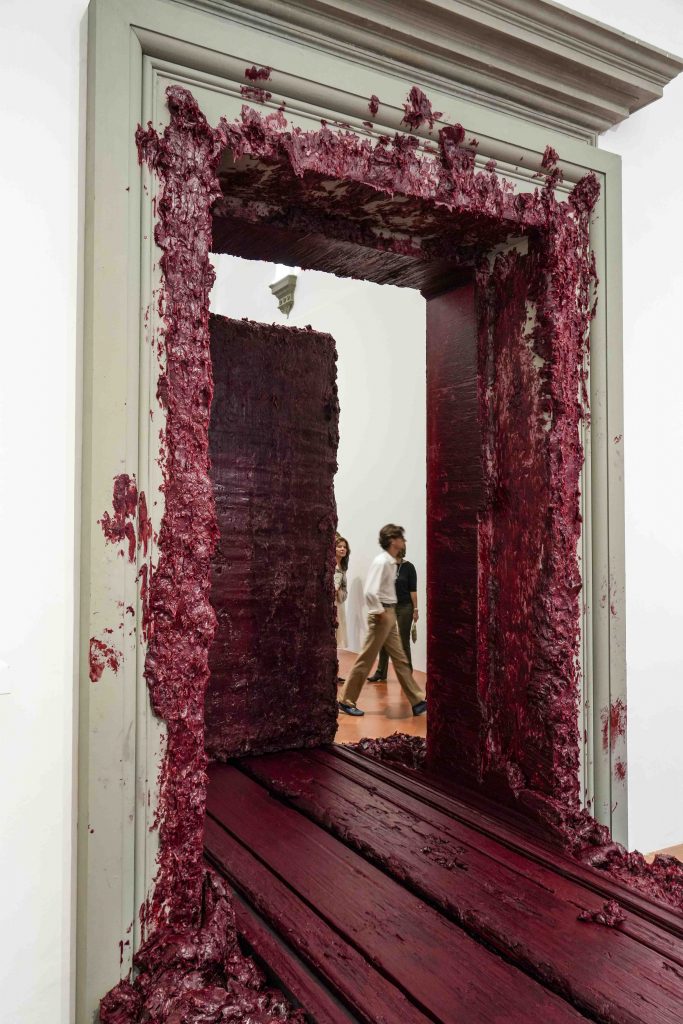
Running until February 4, 2024, our first encounter with the exhibition produced with the celebrated artist who revolutionized the notion of sculpture in contemporary art lies in the ground-floor courtyard. Unlike recent shows, passers-by are unlikely to be drawn into the space by an enticing spectacle of a spaceship, a phallic balloon animal or a light show. Instead a rather mundane, architecturally scaled cube stands squat in the centre as visitors file into Void Pavilion VII (2023), away from the melee of the streets of Florence to stand in front of a trinity of oblong voids. The feeling is unsettling: the human mind knows exactly where it is, but the spatial sensation is that you have been transported to a separate dimension.
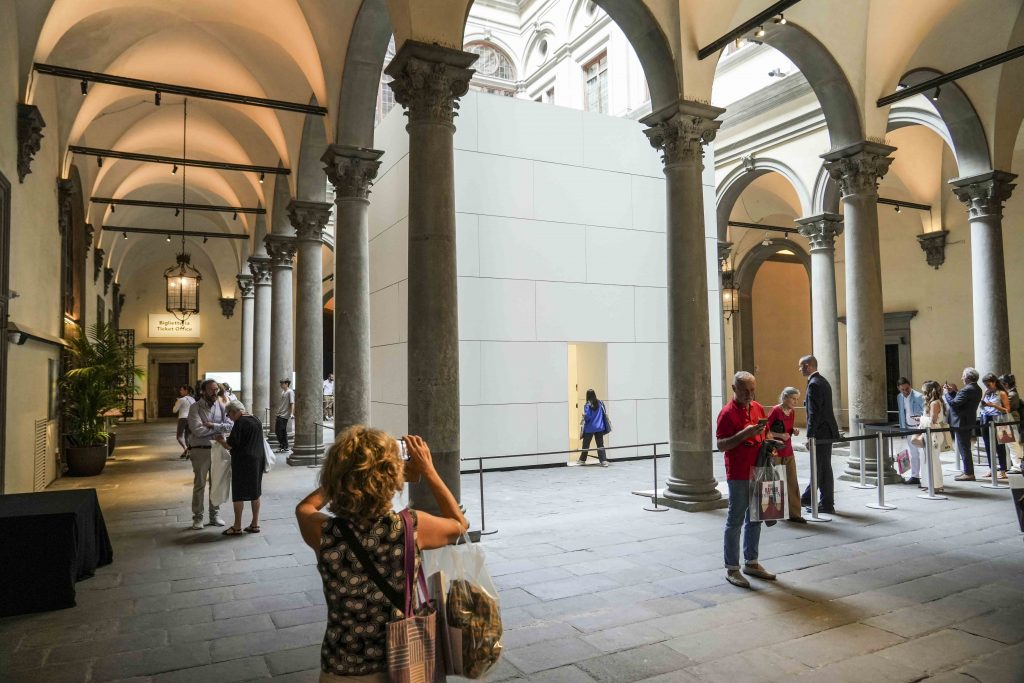
This time round at Palazzo Strozzi, the showstopper is on the piano nobile, and it takes a quarter of an hour, a few steps and some brain activity for realization to dawn. Svayambhu (2007) hits hard. A domineering block of blood-red wax shifts imperceptibly away from a pietra serena cornice along a long wooden track. At first, it’s the size of the installation that makes one blink, then the enormity of the cube and the messiness of the wax. Only on closer inspection do observers perceive the snail-slow movement. In the second room, an assortment of dazzling otherworldly pigment forms (four red, one yellow) seemingly surface from the floor. To Reflect an Intimate Part of the Red (1981) is an early-career exercise in Kapoor’s profound take on colour as form. That same concept continues in the third room with Endless Column (1992), another nascent piece by the artist that fits seamlessly into the dimensions of Palazzo Strozzi. While the work climbs and nigh-succeeds in escaping the interior confines, in so doing connecting earth and cosmos, any further contemplation of this pigment pillar is interrupted by an instinctual understanding that Svayambhu has a back end and actually runs between Room One and Room Three. Red wax is haemorrhaging left, right and centre through the interstitial gaping wound. It’s disconcerting, demanding and engrossing to the point that you cannot help but return from other rooms to observe the status-quo of this audacious architecturally driven artwork.
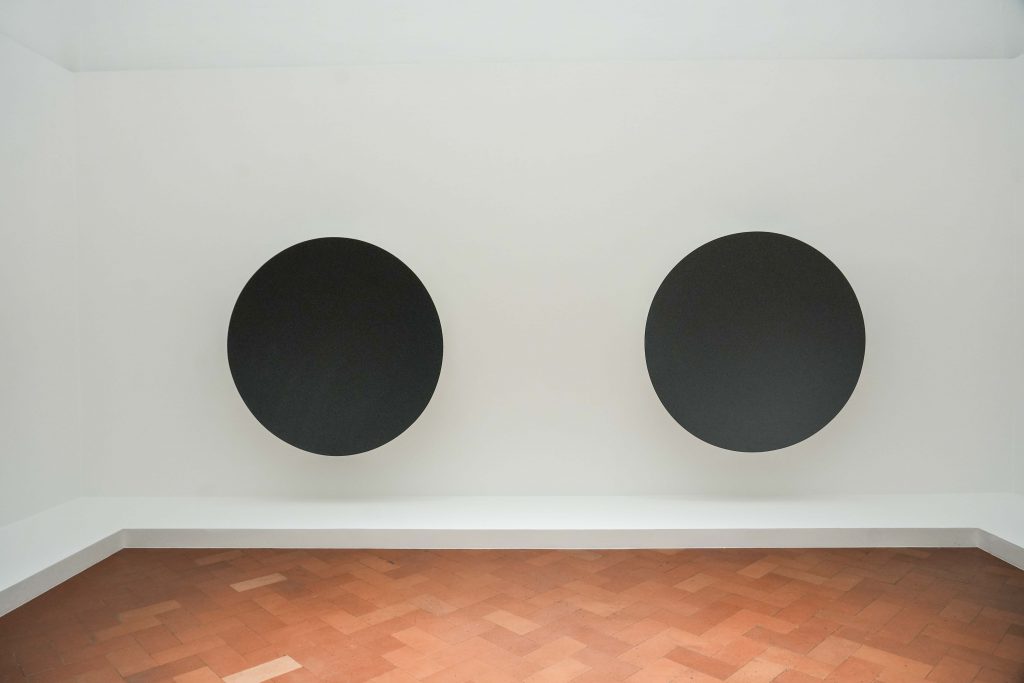
Absolute darkness reigns in Room Four. Making use of Kapoor’s hotly debated Vantablack, the super black coating on Non-Object Black (2015) embodies the exhibition title. Both untrue and unreal, at first glance we fail to observe the black ball that is an integral element of the sculpture since Vantablack absorbs over 99.9 per cent of visible light. Perfect optical illusion is in play. Dark Brutal disturbs me deeply. An absolute black circle on a white wall lures the onlooker into the depths and suddenly you cannot escape. This defiant use of blackness endures in Gathering Clouds (2014). Mounted on the walls, four concave rounds devour the surrounding space. It makes me think of He-Who-Must-Not-Be-Named in Harry Potter.
The antepenultimate chamber provokes a visceral agitation. Flesh, organic matter and blood are known to be leitmotifs in Kapoor’s art, and yet First Milk (2015), Tongue Memory (2016), Today You Will Be in Paradise (2016) and Three Days of Mourning (2016) feel deeply invasive. “Freud would have a field day,” the artist is claimed to have said in a 2021 interview with the Guardian, in which he expounds that the violence in these exquisitely painted yet profoundly savage silicone canvases is prompted by the predominance of human sacrifice’s role in religion. The bloodletting is accompanied, not quietly, by the obscenely oversized steel and resin sculpture titled A Blackish Fluid Excavation (2018). A vaginal gash gnarled with metal, devoid of all sensuality, sexuality or really just life, this work is problematic for any woman (and likely most men) in 2023. With this cocktail of feelings swirling, the second-to-last room is a godsend of unadulterated entertainment. Introduced by an elongated mirror, high-resolution on steroids, everyone’s mobile phone is emerged for a selfie with friends or strangers. On turning the convex corner, looking glasses are ubiquitous to the point that any queasiness from the gore of the previous room shifts to dizziness from over-exposure to the specular surfaces. The space-shifting sculptures reflect and distort our perception of reality. Mirror (2018), Vertigo (2006) and Newborn (2019) are set to be nothing short of catnip for Palazzo Strozzi’s social media engagement.
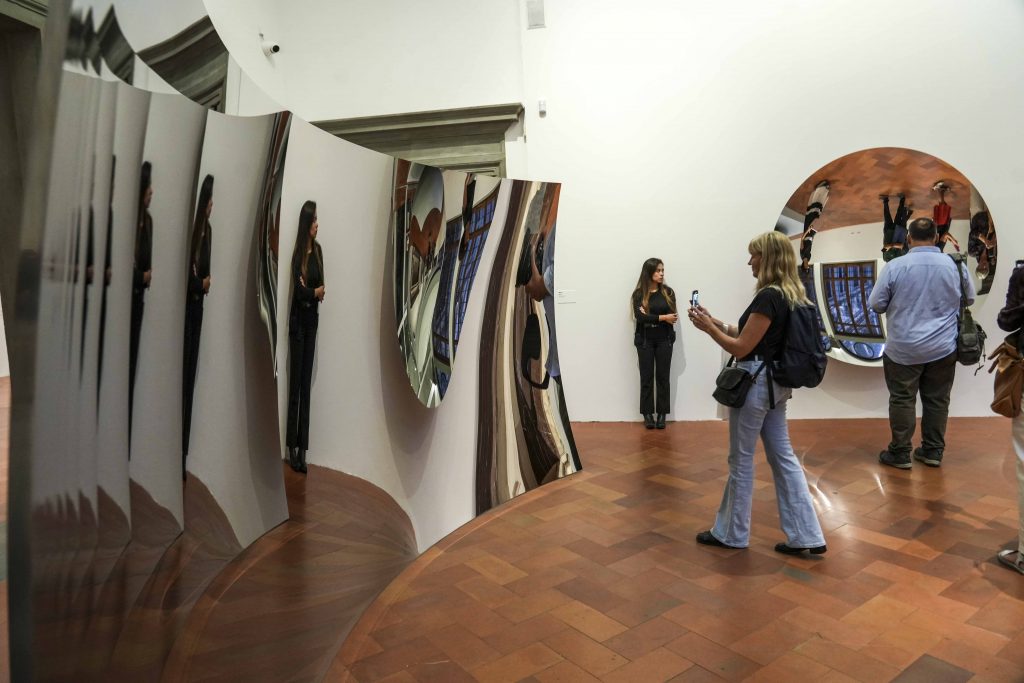
Angel (1990) ends the experience. Slate boulders of varying shapes are covered in intensely hued Prussian blue pigment and affix a hearty question mark or three to the conclusion of the exhibition. Is this sky or earth? Mass or air? Untrue or unreal?

